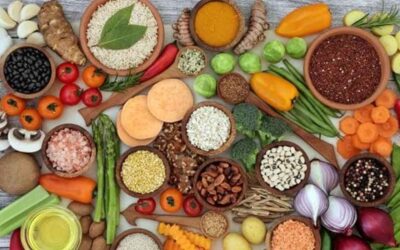savoy cabbage
When we eat a vegetable, we tend to think that it is the only one available. We are not aware of the fact that every vegetable has various kinds and varieties. These might not be common, might be wild, might be too common, or can a bit exotic. But if we take interest in these things, we shall know that some varieties of common vegetables are highly nutritious and beneficial to our health. They provide something which even normal veggies don’t. Savoy cabbage is one such fine example.
Overview

The savoy cabbage is scientifically known as Brassica oleracea. It comes from the Brassica oleracea family. The cabbage is a vegetable that people have during winters. It is one of several cabbage varieties that we consume today. Originating from England, the savoy is also a part of the ancient culture of the Netherlands. It was until the 18th century that it came into existence in Germany. People used to call it ‘Savoyer Kohl’ during that time. The name comes from a specific region of France called the Savoy Region. The leaves are green and a specific texture is there on them. The crunchy leaves are crinkled and tender. Many cultivators deal with savoy cabbage and its production in different parts of the US.
How is it different from other cabbages
While every cabbage is somewhat similar in texture, shape and nutritional value, there are minor differences. One of the major differences in the color of the variations. Cabbages come in different colors, red being the most attractive one. The most common one comes in green color. When you think of cabbage, green is the first thing that comes to our mind. The green cabbage has round and large leaves. The color could be green to light green to paler green. It has a peppery flavor which slight hints of sweetness. The flavor mellows when cooked and remain intact when you eat it raw. Leaves of green cabbage can be easily sliced and you can have it raw. You can toss it into soups or used it in stir-fries. It holds up quite nicely in thick wedges. It is very effective when you grill it or roast it making the edges smoky. Some of the common recipes include cabbage with bacon, hot and sour mushroom soup with cabbage, rice and cabbage soup, cabbage gratin with cream, bacon and mushroom and cabbage pasta with potatoes.
The second most common variety is the red cabbage. It looks similar to the green one, except the purple or reddish color. The structure of the red cabbage is similar to the green one. They both are identical in flavor as well. Hence, you can use red cabbage as you would use the green one. Many people use the red one to brighten up the looks and appeal of any salad or other dish. It is good as a final garnish due to its attractive hue. Some fine recipes to look out for include cabbage and mustard vinaigrette roasts, cider vinegar and apple with red cabbage, Jalapeno slaw and cabbage, cabbage slaw and lemon with hazelnuts, quick cabbage slaw with fish tacos, etc.
The third type of cabbage that can bags attention is the Napa cabbage. Very popular as chinese cabbage, this is not so similar to one we were talking about earlier. The cabbage has a differnet appearance. It isa large and oblong, not round in shape. The filly pale yellow-green leaves give it a unique characteristic. When it comes to flavor, you can find notes of sweetness in more quantity than other cabbages. The leaves are the most tender in this one. If you are looking to add something soft and mild to the preparation, Naba cabbage can be a good option. As the main part of Chinese cuisine, it is a good option to add to dumblings or stir-fries. These are also great when you use them as salads and slaws. The raw form is a pleasure to eat. You can try recipes with Napa cabbage such as tofu salad with napa, napa dumplings, deep-dish cabbage with Farro casserole, kimchi fried rice, napa cabbage and kale coleslaw with ginger cream dressing, etc.
And then comes our savoy cabbage. It has the same shape as the red cabbage. The best part of the savoy cabbage is the most influencing deep-green leaves. Yes, the leaves will attract you from a far distance and you might not resist taking few balls at home. The flavor is also slightly on the better side. The hints of mildness in the leaves complement the astonishing earthen flavor. The leaves are very crispy which makes them a good addition to raw meals. You can also have it by using the methods of roasting, sauteing and cooking. Some of the coolest recipes to try to include deep-dish cabbage with faro casserole, weeknight cabbage rolls, stir-fried cabbage with peanut sauce, bacon and roasted cabbage, etc.
Nutritional value of savoy cabbage
Just like any green leafy vegetables, the nutritions are present in plenty in savoy cabbage. But we won’t just tell you the details in brief. We shall explain to you every nutritional fact about his vegetable. Let us begin.
We will take a cup of fresh savoy leaves as a standard measure to dictate the nutritional value.
One cup of savoy cabbage contains ample nutrients to keep you healthy and active during the day. A cup will provide you with 19 calories which means that you can keep the calorie count low by having one or two cups of the vegetable. This makes it a good addition to a low-calorie diet or a low-calorie breakfast.
A cup will give you 0.1g of fat. This is as surprising as it can get. Don’t worry about that extra fat when you have this magical vegetable in your diet. Moving one, the same cup has nil saturated fat and trans fat. Savoy cabbage is a no-pressure diet for your cholesterol. It contains 0% in one cup. So don’t worry about elevated blood pressure meters when you are consuming this green leafy vegetable.



